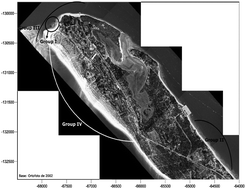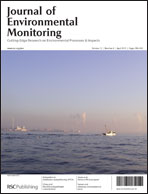Distribution and structure of the upper sublittoral macrobenthic communities of Tróia sand beaches (Setúbal, Portugal) and their relationship with environmental factors
Abstract
The present study dealt with the spatial and temporal variability of the distribution of the upper sublittoral benthic macrofauna of the Tróia peninsula sand beaches and its relationship with abiotic environmental factors. The existence of a relationship between the data set of macrobenthic species distribution and community structure in the Sado estuary (432 individual samples) and the environmental factors in analysis was investigated. Morpho-sedimentary data analysis revealed an environmental gradient, from the marine margin (exposed marine environment) to the estuarine margin (sheltered estuarine environment). Benthic macrofauna analysis showed a gradient of increasing number of individuals, species richness and diversity from the marine margin (Exposed) to the estuarine margin (Sheltered). Canonical Correspondence Analysis showed the dominant patterns in the community structure to be explained by the environmental factors considered, the most important, of which in influencing the spatial and temporal pattern, being beach slope, organic matter and calcium carbonate contents. The structure of the sandy beach communities studied showed a clear dominance of the spatial patterns over the seasonal ones. Four assemblages were defined—(1) an assemblage dominated by Angulus tenuis, on the marine margin of the peninsula; (2) an assemblage dominated by Euclymene sp. and Apseudes latreillei, on the sea-estuary transition area and related to the presence of a Zostera spp. meadow; (3) an assemblage dominated by Glycera sp. and Scoloplos armiger, on the sea-estuary transition area; (4) an assemblage dominated by Notomastus latericeus, Nassarius reticulatus and Cyathura carinata, on the estuarine margin.


 Please wait while we load your content...
Please wait while we load your content...